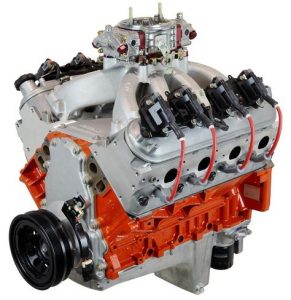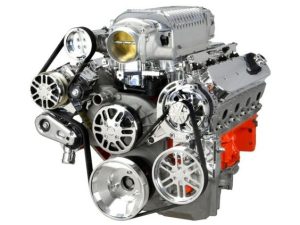In the world of cars, trucks, and other motorized vehicles, engine displacement is a term frequently thrown around. But what exactly does it mean? For those unfamiliar with the technical jargon, engine displacement can be a confusing concept.
This article dives deep into the world of engine displacement, explaining what it is, how it’s measured, and how it impacts a vehicle’s performance. We’ll also explore how engine displacement factors into fuel efficiency and buying decisions.

Demystifying Engine Displacement
Engine displacement refers to the total volume swept by all the pistons within a reciprocating engine’s cylinders. In simpler terms, it’s a measure of the engine’s size and its potential for power output.
Think of it like this: the larger the cylinders and the farther the pistons travel within them (displacement), the more air and fuel the engine can mix and combust, theoretically generating more power. This is why larger engines are often associated with greater horsepower and torque.
How is Engine Displacement Measured?
Engine displacement is typically measured in two units: cubic centimeters (cc) for smaller engines, often found in motorcycles and compact cars, and cubic inches (ci) for larger engines, common in trucks and SUVs.
The formula for calculating engine displacement involves three key factors:

- Number of cylinders: How many cylinders does the engine have? A V8 engine will naturally have a larger displacement than a four-cylinder engine.
- Bore: This is the diameter of each cylinder. The wider the bore, the more volume each cylinder can hold.
- Stroke: This is the distance a piston travels up and down within the cylinder. A longer stroke length contributes to a larger displacement.
Here’s a simplified example: imagine a four-cylinder engine with a bore of 3.5 inches and a stroke of 4 inches. To calculate the displacement per cylinder, we can use the formula for the volume of a cylinder (pi * radius^2 * height). In this case, the radius would be half the bore (1.75 inches). Plugging these values in, we get the volume per cylinder of approximately 23.76 cubic inches. To find the total displacement, we multiply this volume by the number of cylinders (4) for a total of 95.04 cubic inches.
While this is a basic example, it highlights how these three factors combine to determine an engine’s displacement. Car manufacturers will specify the engine displacement in their vehicle brochures and specifications. You can also find this information online by searching for the specific vehicle make and model.
Engine Displacement and Performance: A Balancing Act
Engine plays a significant role in an engine’s power output. Generally, larger displacement engines can produce more horsepower and torque, translating to greater acceleration and towing capacity. This is why muscle cars and heavy-duty trucks often boast large displacement engines.

However, there’s more to the story than just size. Modern engineering advancements like turbochargers and superchargers can force more air and fuel into an engine, boosting power output without necessarily increasing displacement. Additionally, smaller displacement engines can be more fuel-efficient, a crucial factor for many drivers.
Here’s a breakdown of some key considerations when it comes to engine and performance:
- More power: For those seeking maximum power and towing capability, larger displacement engines might be the way to go.
- Fuel efficiency: Smaller displacement engines tend to be more fuel-efficient, leading to lower running costs.
- Driving experience: A larger displacement engine might offer a more powerful and exhilarating driving experience, while a smaller engine might prioritize smooth and economical operation.
Ultimately, the ideal engine depends on your individual needs and priorities.
Beyond Power: Additional Considerations with Engine Displacement
While engine displacement is often equated with power, it’s not the only factor influencing a vehicle’s performance and fuel efficiency. Here are some other aspects to consider:

- Engine technology: Modern engines incorporate advanced technologies like variable valve timing and direct injection, which can optimize performance and fuel efficiency regardless of displacement.
- Transmission: The type of transmission can significantly impact how an engine’s power is delivered to the wheels. Automatic transmissions with more gears can improve fuel economy.
- Vehicle weight: A heavier vehicle requires more power to move, so a larger displacement engine might be necessary to maintain good performance.
Diving Deeper: Engine Displacement and Specific Vehicle Types
Now that we understand the fundamentals of engine, let’s explore its impact on different vehicle categories:
Everyday Cars: Balancing Act Between Power and Economy
For most everyday drivers, a balance between power and fuel efficiency is key. Compact and mid-size sedans often come equipped with 2.0-liter to 3.5-liter engines, offering sufficient power for daily commutes and highway cruising while maintaining decent fuel economy figures.
However, for those seeking a bit more zip without sacrificing too much on fuel efficiency, some manufacturers offer turbocharged engines in these segments. These engines can deliver surprising power outputs from smaller displacements, making them an attractive option.
Performance Cars: Where Power Reigns Supreme
For driving enthusiasts, engine often takes center stage. Performance cars typically boast larger engines, ranging from 3.0-liters to well over 5.0-liters in some high-performance models. These engines prioritize horsepower and torque, translating to exhilarating acceleration and thrilling driving experiences.
While fuel efficiency might not be a top priority in this segment, advancements in engine technology help to mitigate some of the fuel consumption drawbacks associated with larger displacements.
Trucks and SUVs: Power for Work and Play
Trucks and SUVs often require the muscle to handle heavy payloads and tow trailers. This translates to a larger engine displacement range, typically starting from 3.0-liters for smaller SUVs and reaching well over 6.0-liters for heavy-duty trucks.
These engines prioritize torque, the pulling power needed for hauling and towing. While fuel efficiency might be lower compared to smaller vehicles, advancements in transmission technology and features like cylinder deactivation (temporarily shutting down cylinders when not needed) are helping to improve fuel economy in these segments.

The Rise of Eco-Friendly Options: Electrification and Smaller Engines
The automotive industry is undergoing a significant shift towards electrification. Hybrid and electric vehicles offer superior fuel efficiency and reduced emissions compared to traditional gasoline-powered engines. While engine isn’t a direct factor in these vehicles, electric motors provide instant torque and impressive acceleration, making them strong contenders in the performance and practicality categories.
Additionally, there’s a growing trend towards smaller, more efficient gasoline engines paired with advanced technologies to achieve better fuel economy without sacrificing too much power.
Finding the Right Fit: It’s All About Your Needs
There’s no one-size-fits-all answer when it comes to engine. The ideal choice depends on your individual needs and priorities. Consider your driving habits, typical passenger and cargo loads, and desired fuel efficiency when making your decision. Don’t hesitate to test drive vehicles with different engine options to experience firsthand how displacement affects performance and driving feel.
Remember, engine displacement is just one piece of the puzzle. Modern engineering advancements and vehicle design all play a role in a car’s overall performance and fuel efficiency.
